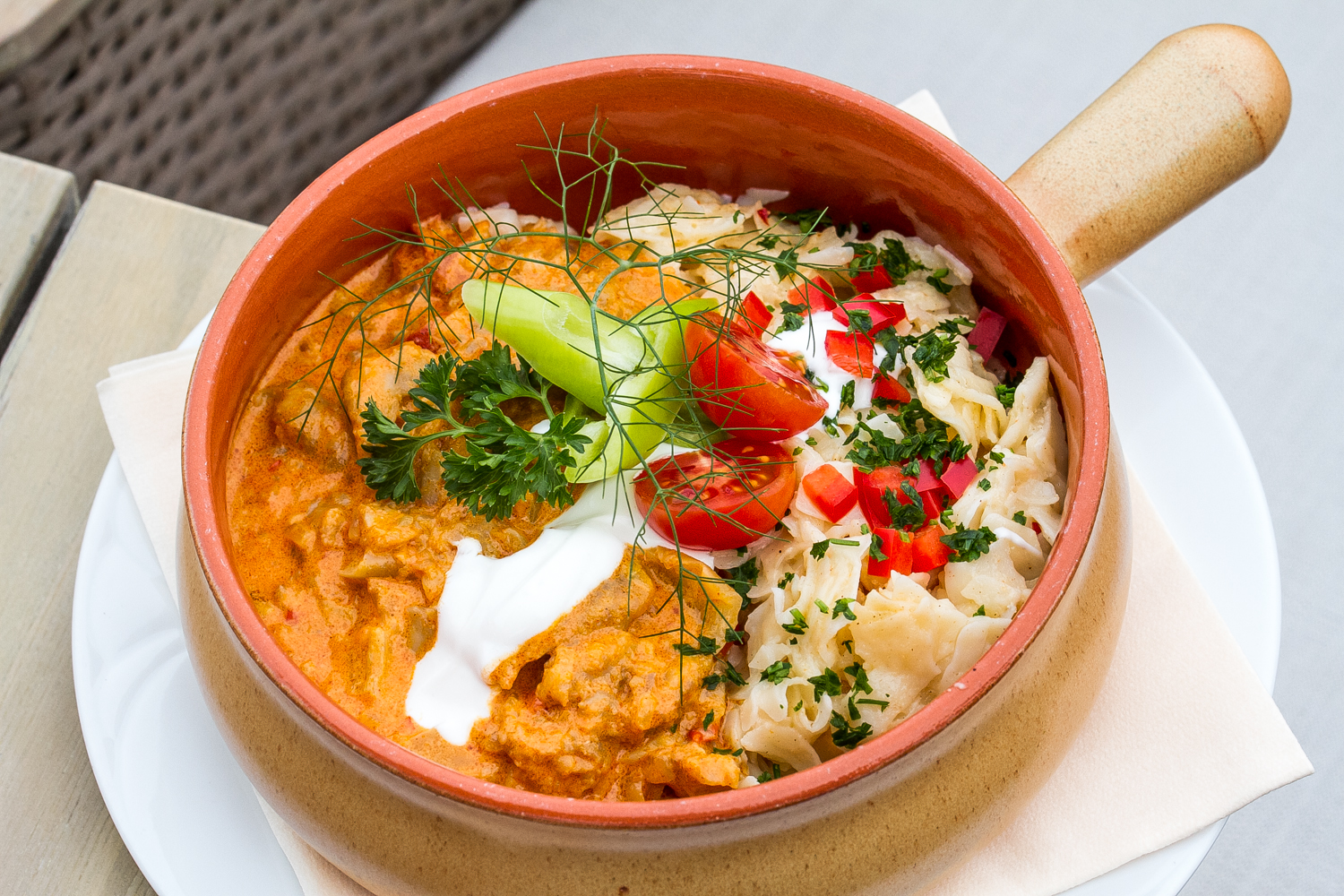Starters
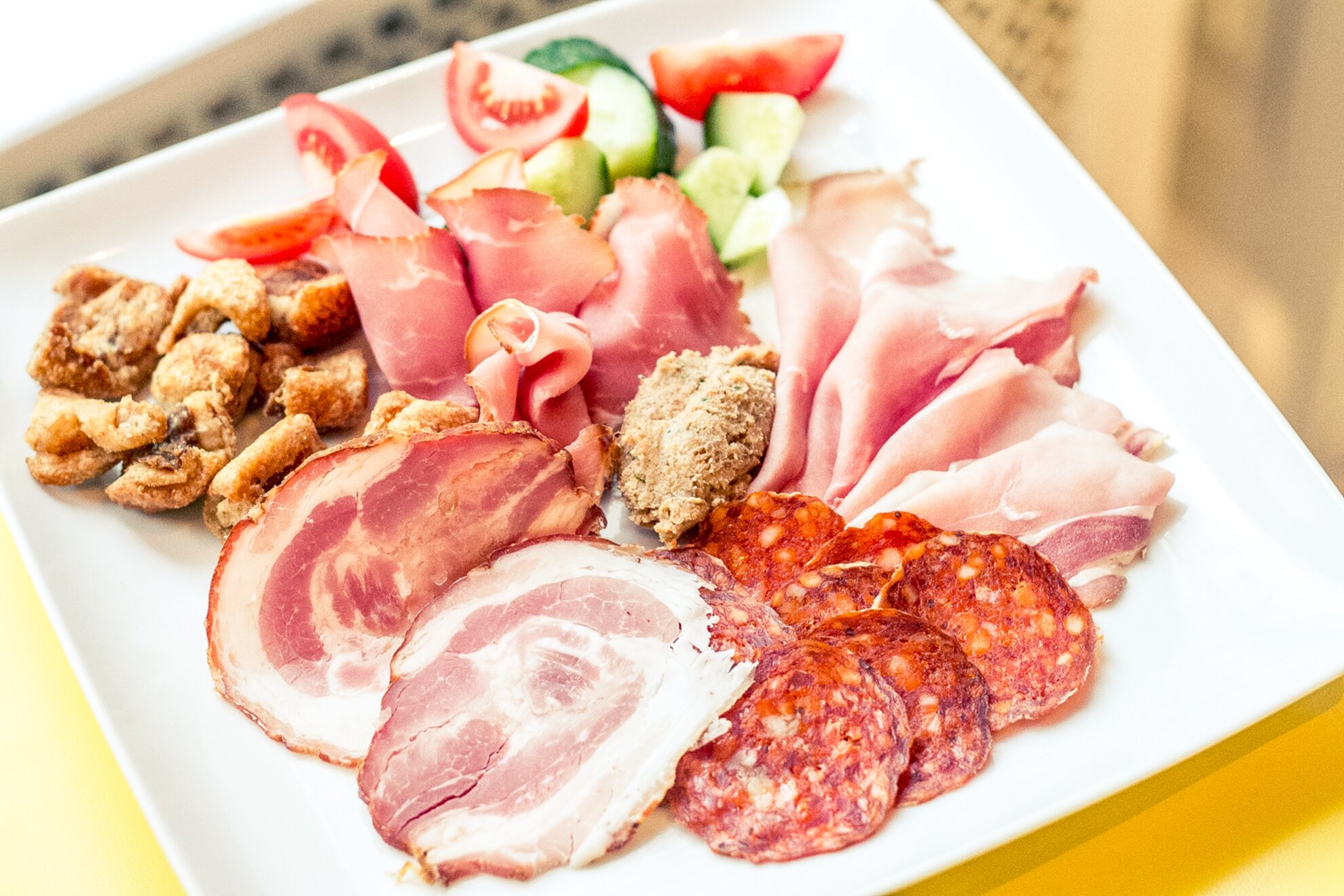
Töltött tojás: like a deviled egg served with ham often.
Körözött: a cream cheese and paprika dip.
Szalámi and smoked Hungarian sausage like Gyulai or Csabai.
Szalonna: thick smoked bacon, usually served with salt, fresh bread, paprika and tomato.
Hortobágyi palacsinta: often served as a starter but it’s a filling dish in itself, basically it's a meat-filled pancake smothered in a paprika and sour cream sauce.
Libamáj: goose liver like "foi gras."

Soups
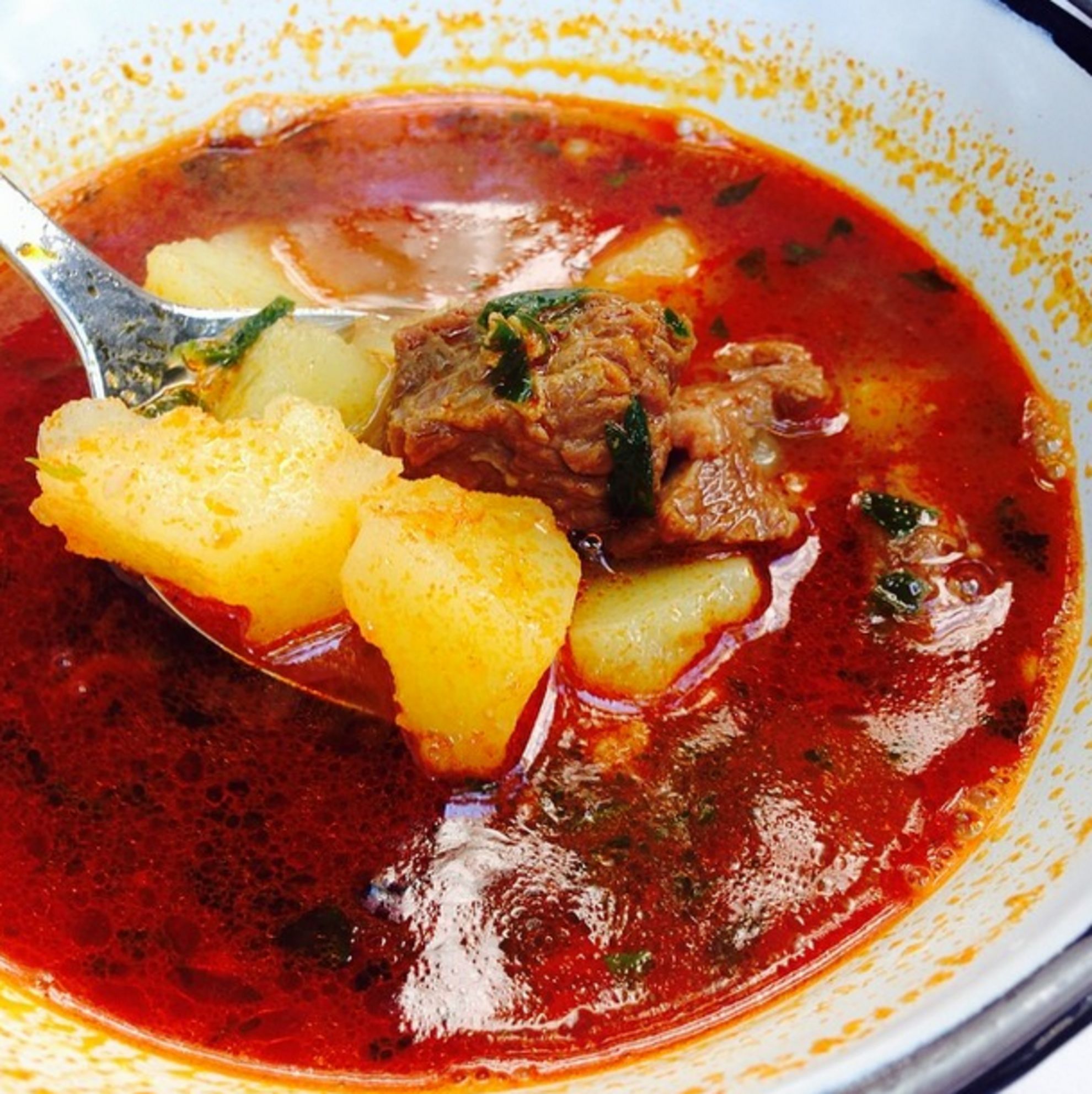
Gulyásleves : a hearty soup with paprika, onion and beef cubes stewed with vegetables in a big cauldron.
Halászlé: a bright red, paprika-based fish soup made with carp, catfish, perch or pike. Húsleves: a chicken broth based soup, usually with carrots and angel hair noodles.
Újházi-tyúkhúsleves: a brothy hen soup made with carrots and other veggies.
Jókai-bableves: a hearty bean soup, often served with pork knuckle, flavoured with vinegar and sour cream. It's named after 19th century Hungarian novelist
Jókai Mór, and amazingly, not because he invented it, but just because he really, really liked it.
Palócleves: broth with lamb and green beans, finished with sour cream.
Gyümölcsleves: cold fruit soups are popular especially in summer, these include sour cherry soup served with cream, apricot or mixed fruit versions.
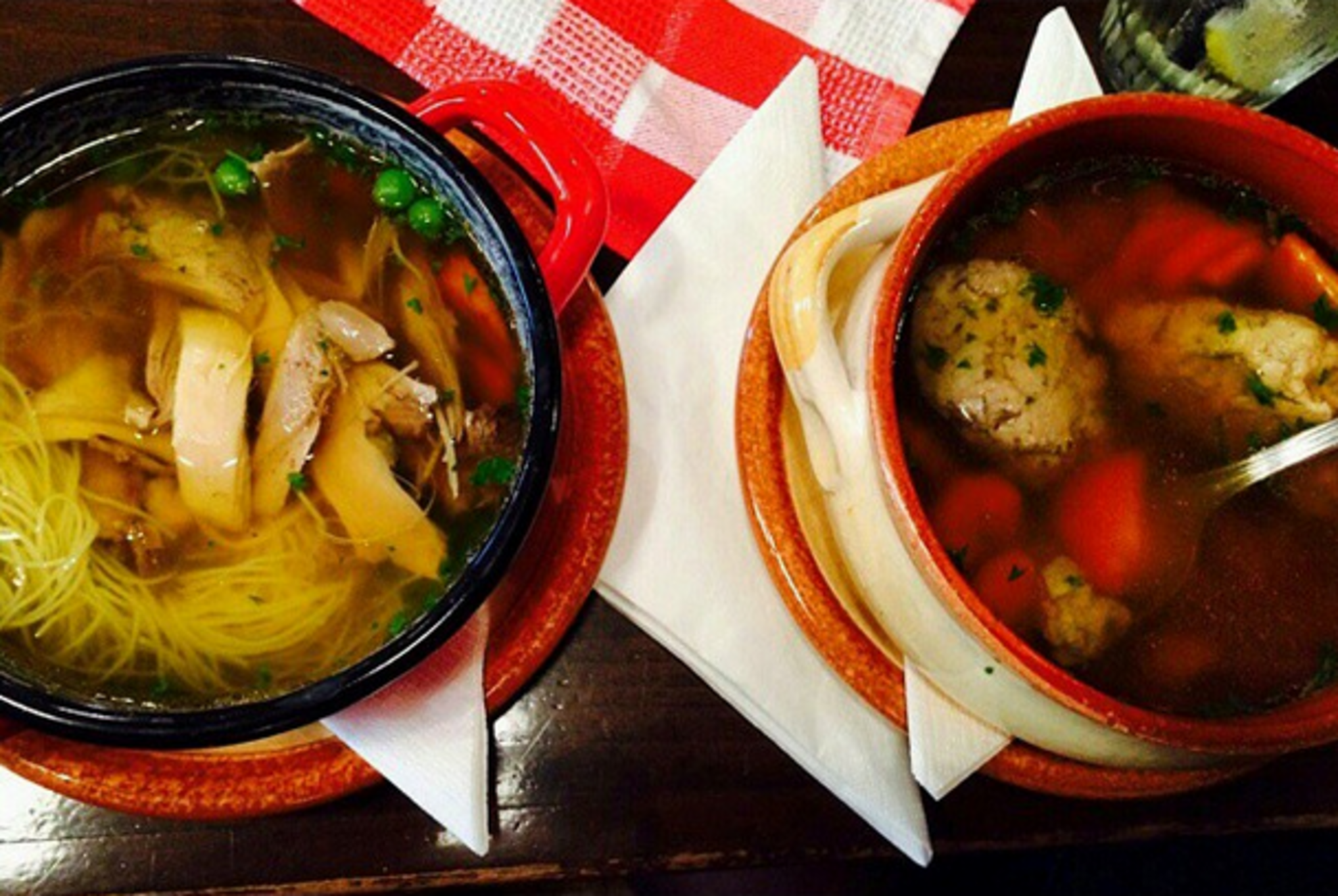
Mains
Marhapörkölt: a paprika and onion based slow-cooked beef stew served with nokedli (a Hungarian dumpling), tarhonya (egg barley) or turóscsusza (a curd-cheese pasta).
Csirkepaprikás: a tasty paprika and cream based chicken stew usually served with nokedli.
Harcsapaprikás: similar to the chicken version, but with catfish instead.
Töltött káposzta: stuffed cabbage rolls filled with minced pork meat and served with sour cream added on top.
Lecsó : a summer dish, based on a tomato and paprika stew served with Viennese sausage, bacon and/or egg.
Disznótoros: traditionally in the winter months or before Christmas when pigs are slaughtered and its various parts are used up. For example, kolbász (grill sausages), hurka (thicker blood or liver sausages), szalonna (bacon), ham, töpörtyű (crackling) and disznósajt (head cheese or brawn).
Rántott hús: crumbed chicken or veal, often served with a wedge of lemon and parsley potatoes.
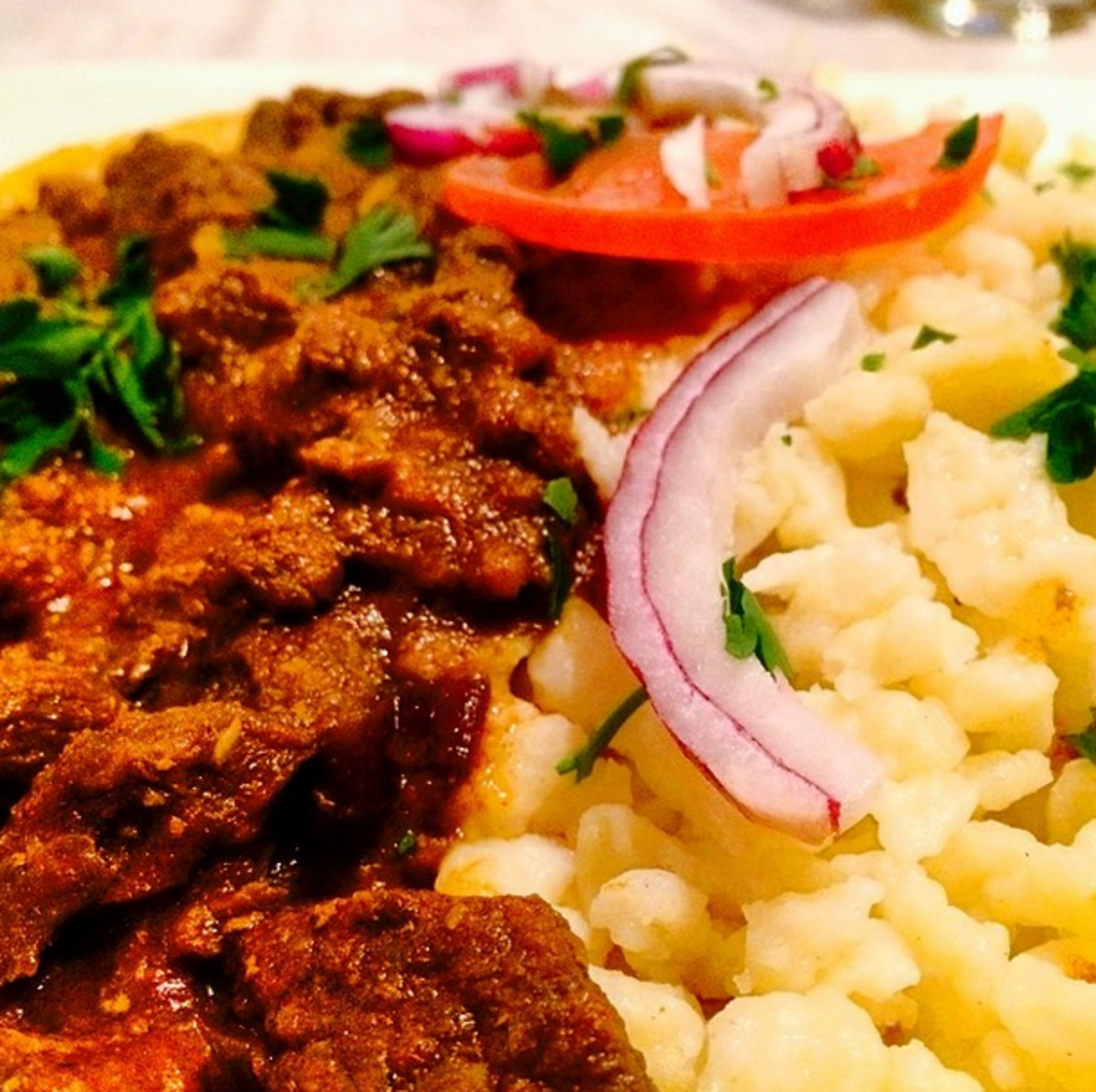
Túróscsusza: while this curd-cheese pasta can be served as a side to marhapörkölt and harcsapaprikás, it can also be a meal in itself, served with bacon.
Tócsni: a Hungarian hashbrown.
Főzelék: this is a thick vegetable stew that comes in many versions including lentil, potato, spinach, pumpkin, green beans, or cabbage.
Cigánypecsenye: pan-fried or grilled slices of pork served with thick bacon slices on top.
Hagymás rostélyos: grilled meat (often steak) served with a mountain of deep-fried onion on top.
Töltött paprika: whole peppers filled with mince and rice in a tomato sauce.
Brassói aprópecsenye: cubes of pork, cooked with paprika, onion and garlic and served with cubes of potato.
Pacalpörkölt: a tripe stew.
Rántott borjúláb: breaded calf foot served with tartare sauce and lemon.
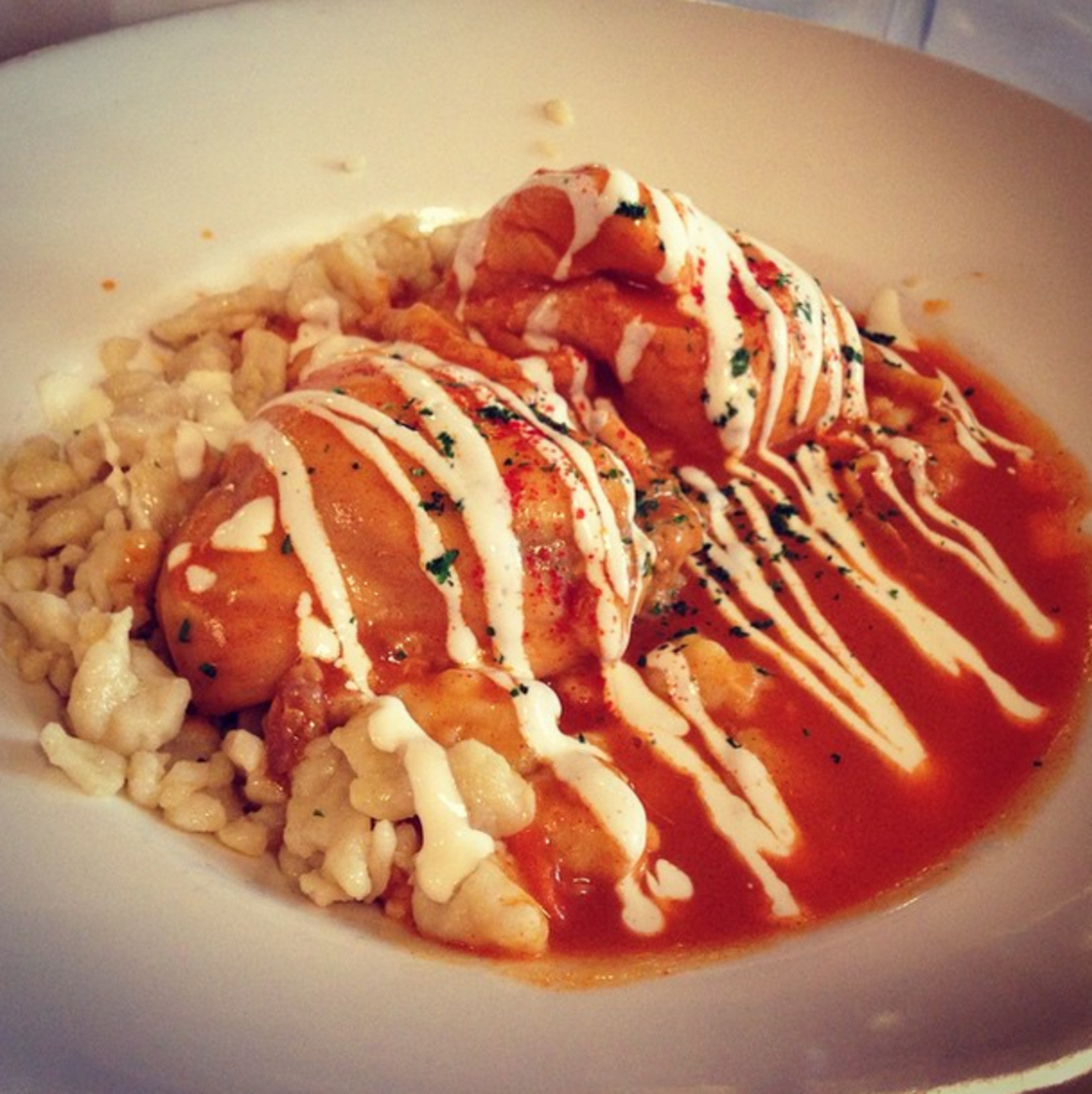
Rakottkáposzta: a layered cabbage bake with layers or rice, mince, cabbage (usually sauerkraut) and served with sour cream on top.
Székelykáposzta: a tasty cabbage dish served with bits of pork and bacon.
Paprikás krumpli: a potato stew made in the “paprikás” style, often served with Viennese sausage.
Csülök: Pork knuckle roasted or boiled, often served with horseradish and mustard.
Vadas: a game stew with vegetable gravy and eaten with dumplings.
Sólet: Hungarian-Jewish bean stew.
Kocsonya: like an aspic or meat jelly, which has meat and vegetables in it and is eaten with lemon and bread.SidesRice and potatoes are common options as sides, but you could also try nokedli or galuska (soft egg dumplings) or tarhonya (egg barley). In terms of vegetables, sides include red or white cabbage, pickled vegetables known as "savanyúság" such as "kovászos uborka" (pickled cucumbers), "alma paprika" (paprika stuffed with pickled cabbage), "csalamádé" (pickled cabbage salad) or "cékla" (beetroot). Another common salad is "uborkasaláta" a fresh cucumber salad topped with sour cream. We also have to mention "tejföl" which is sour cream - a regular participant in Hungarian cooking. On most tables it's common to find
Erős Pista (a hot sauce) and ground hot or sweet paprika are also served alongside many dishes.Sweets
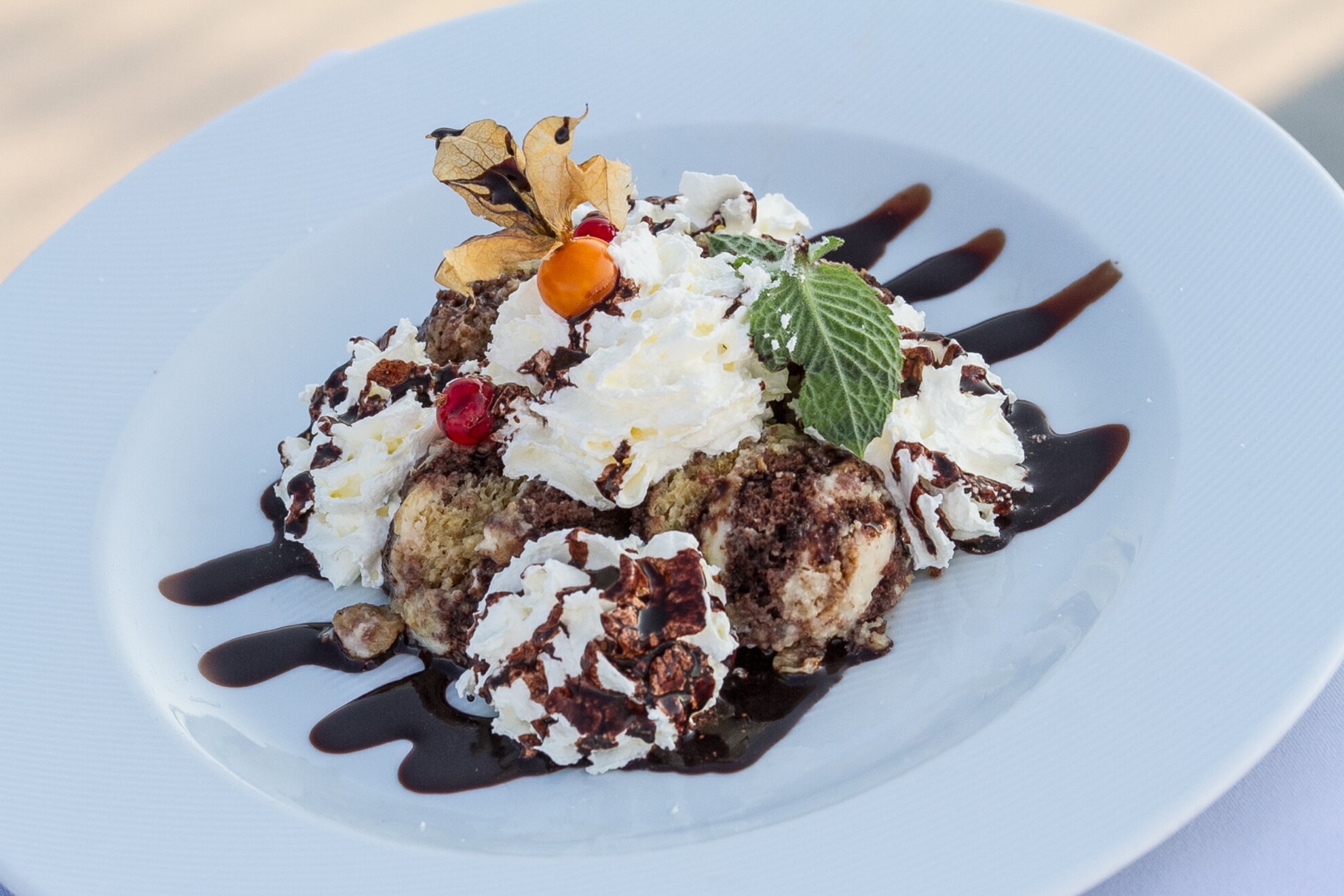
Gundel Palacsinta : pancakes filled with a walnut/rum mixture and smothered in a dark chocolate sauce.
Somlói galuska: a Hungarian trifle based on chunks of sponge cake covered in walnuts and rum with a chocolate sauce and plenty of cream on top.
Dobos torta: a layered cake with chocolate buttercream and a crisp caramelised top.
Rákóczi túrós: a sweet-pastry topped with cottage cheese and apricot jam.
Rigó Jancsi: a chocolate sponge cake with chocolate cream.
Eszterházy torta: layered almond and cream cake.
Túrógombóc: sweet cheese dumplings served with sugar or stuffed with fruit like plums (szilvásgombóc).
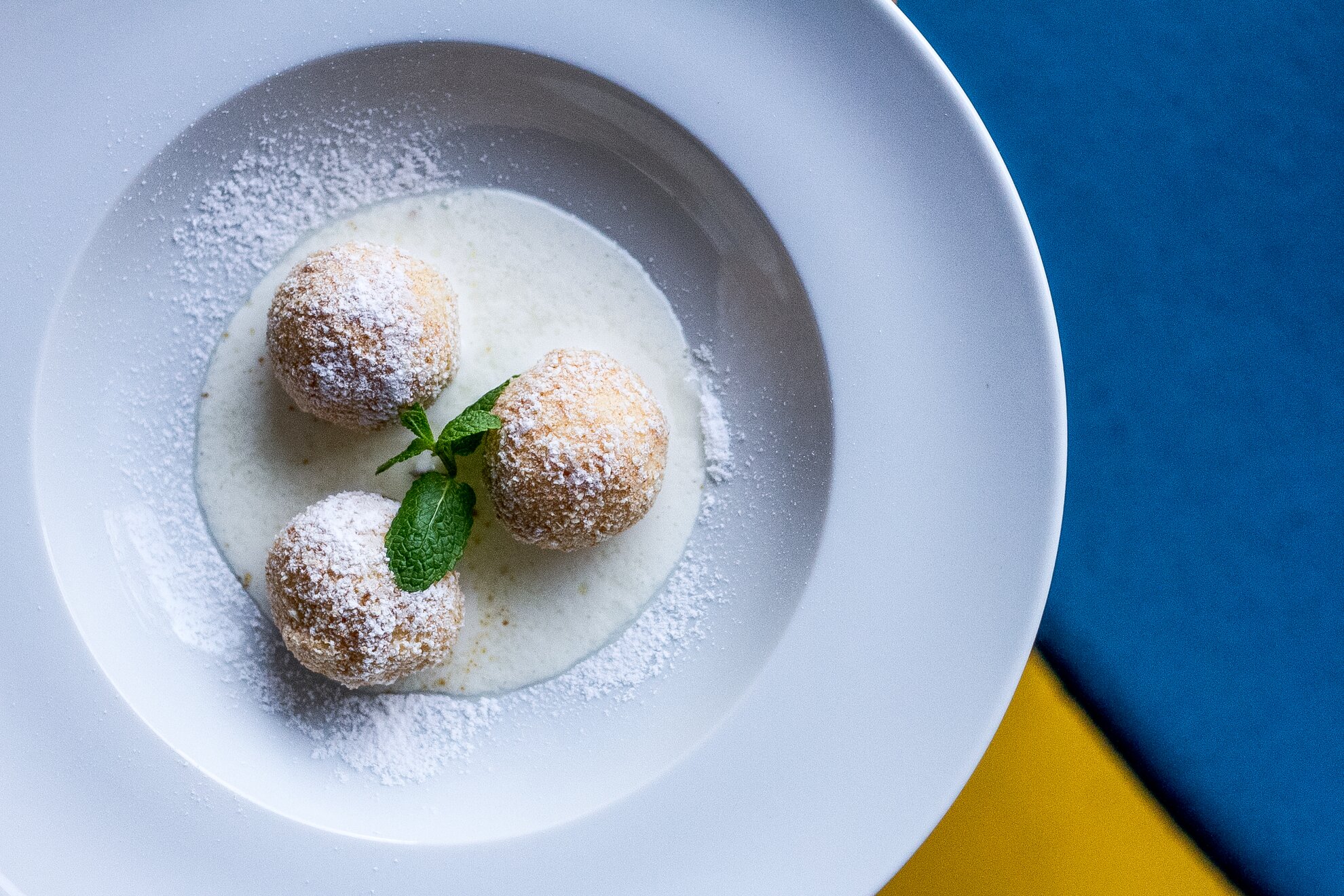
Krémes: thick custard between layers of pastry.
Madártej: like a Floating Island with whipped egg whites sitting in a vanilla custard-like sauce.
Beigli: a poppy seed or walnut roll, popular at Christmas and Easter.
Gerbeaud slice: sweet-pastry filled with apricot jam and a mixture of confectioner’s sugar and ground walnuts, topped with chocolate icing.
Aranygaluska: balls of dough rolled in melted butter, sugar and crushed walnuts, assembled into layers and sprinkled with raisins, before being baked until golden brown. Served with vanilla custard.
Fánk: Hungarian doughnut often served with apricot jam. There are also other variations such as csöröge (twisted, thin, fried yeast dough, dusted with sugar).
Gesztenyepüré: chestnut purée served with cream.
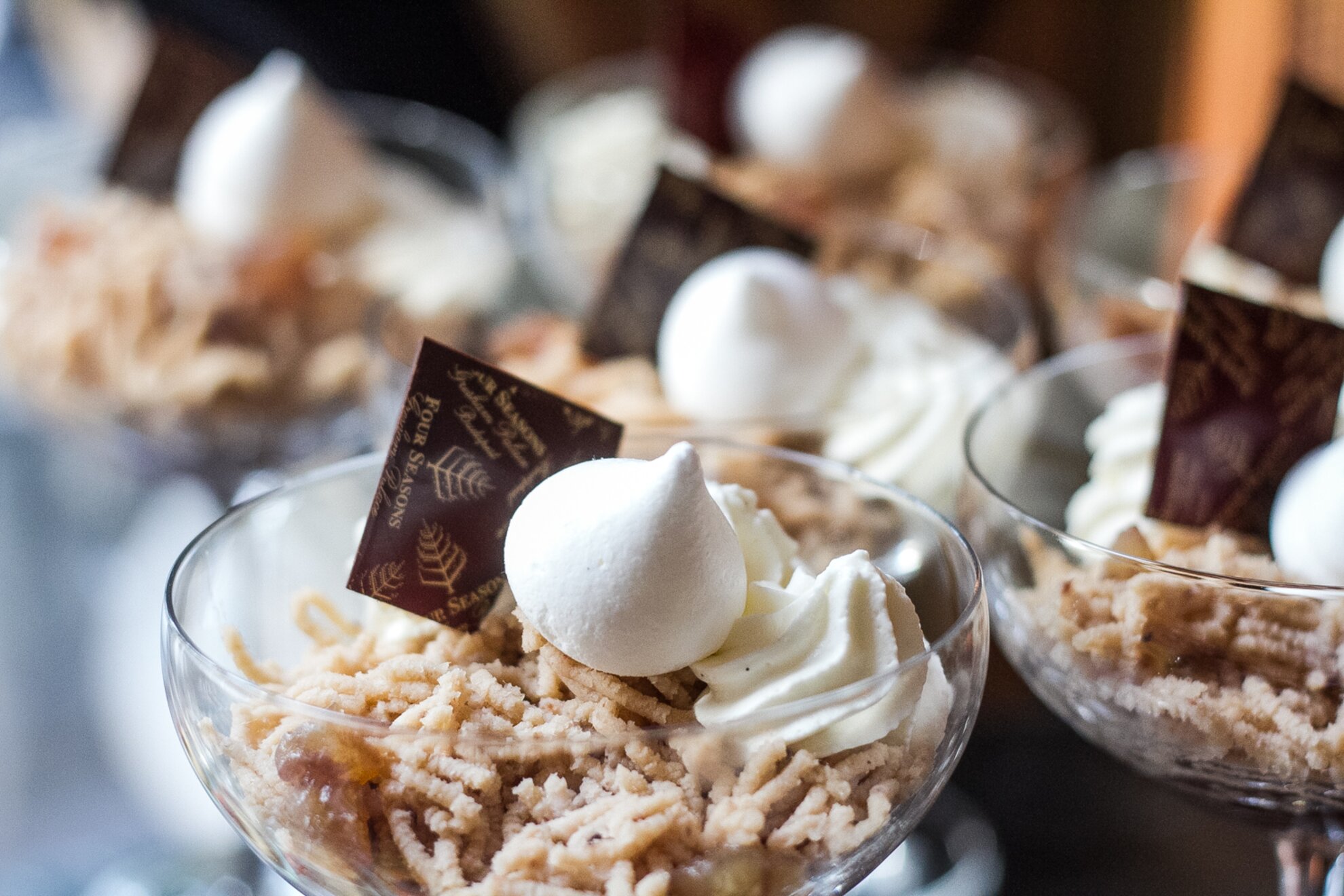
Almás pite: a kind of apple pie served in squares. Mákosguba: a bread-based poppy seed dessert, served with custard.
Flódni: a Hungarian Jewish cake with layers of walnuts, poppy seed and jams.
Császármorzsa: sweet crepe crumbs served with jam also known as "kaiserschmarrn."
Bukta: a baked cake served with jam, curd cheese or walnuts.
Vaníliás kifli/hó kifli: a crescent shaped, vanilla cookie dusted with sugar.
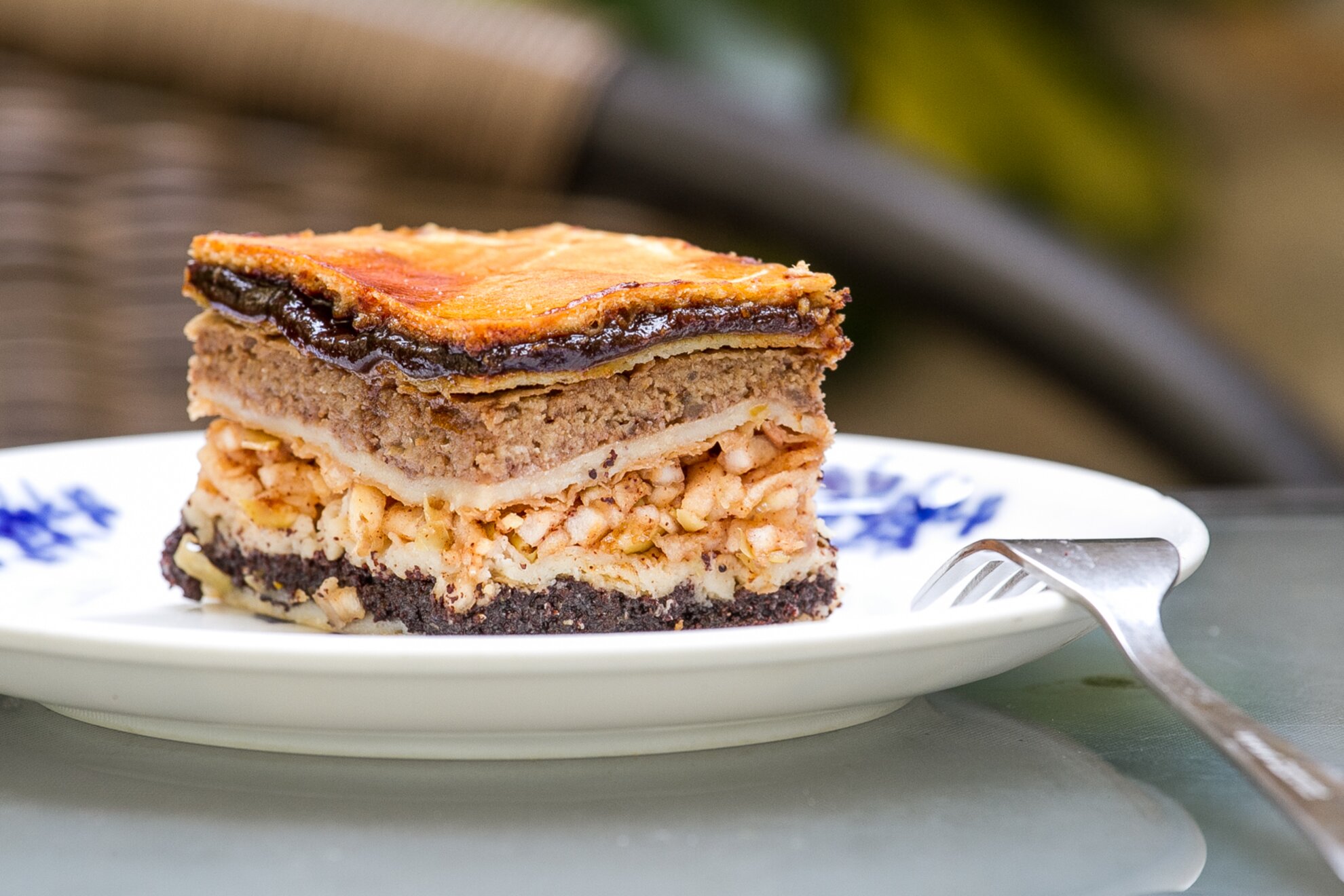
Street food or snacks

Lángos : deep fried dough usually served with garlic, sour cream and grated cheese.
Töki pompos: also known as "kenyér lángos" a thick bread, topped with sour cream, bacon, cheese and onion.
Zsíros kenyér: bread covered in lard and served with sweet paprika and red onion slices.
Rétes: Hungarian strudel filled with fruit or curd cheese.
Kürtőskalács: a round cake dusted in flavours like walnuts, cinnamon or chocolate.

Bakery

Kakaóscsiga : a cocoa filled cake from the bakery.
Kifli: a crescent shaped bread roll.
Zsömle: a Hungarian bread roll.
Pogácsa: a small pastry
with melted cheese or töpörtö (crackling)
Stangli: a savoury pastry that is usually flavoured with salt or cheese.
Túrósbatyú: a popular pastry filled with curd cheese.
Pozsonyi kifli: also known as "patkó" this crescent-shaped pastry can be filled with a walnut mixture or curd cheese.Drinks
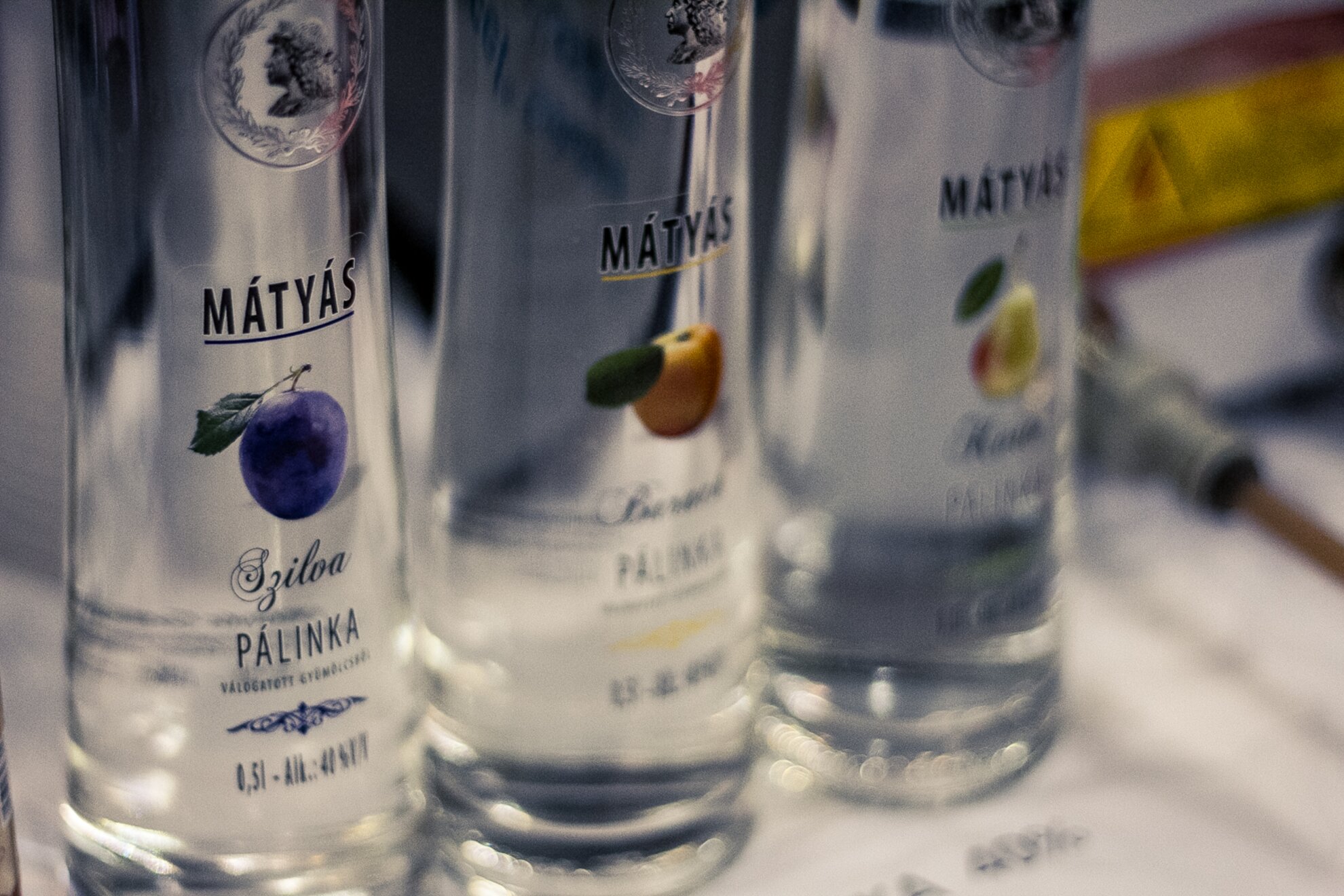
Pálinka : a Hungarian fruit brandy in many different flavours like plum, apricot and honey.
Unicum: a herbal liqueur.
Tokaji aszú: a sweet, topaz-coloured wine known around the world simply as Tokay.
Egri Bikavér: Hungary’s most famous red wine, also known around the world as “Bull's Blood of Eger” Dreher, Soproni,
Arany Ászok: these are famous Hungarian beer brands. Fröccs:
a summer drink usually where red or
rosé wine is
mixed with different quantities of soda water. St. Hubertus : a herbal liqueur.

